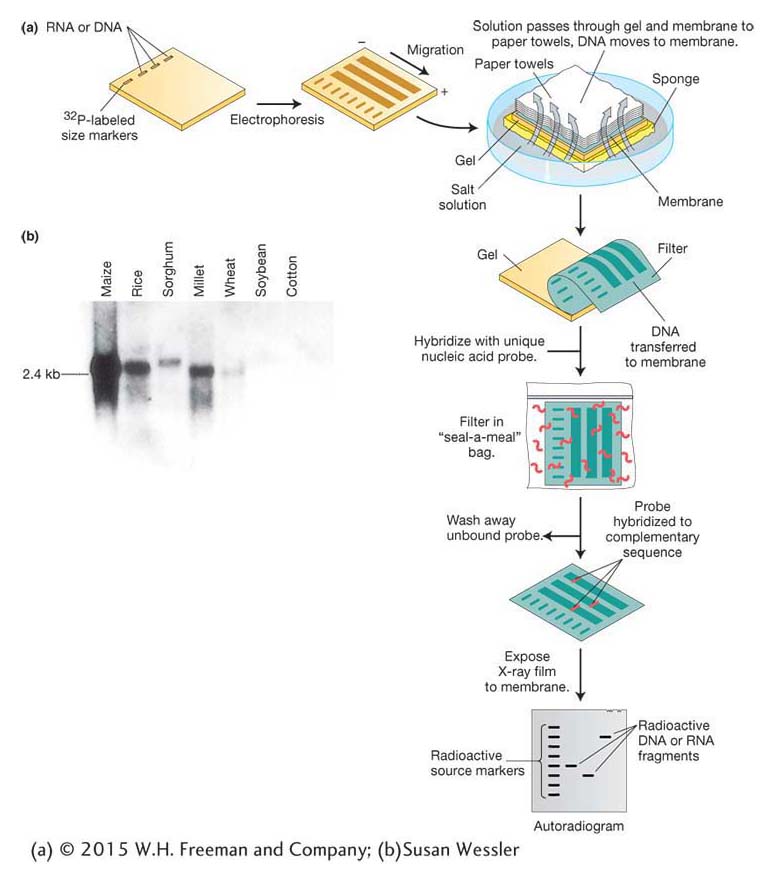
In this example, a radioactive probe is used to identify specific nucleic acids separated by gel electrophoresis. (a) RNA or DNA restriction fragments are applied to an agarose gel and undergo electrophoresis. The various fragments migrate at differing rates according to their respective sizes. The gel is placed in buffer and covered by a membrane and a stack of paper towels. The fragments are denatured to single strands so that they can stick to the membrane. They are carried to the membrane by the buffer, which is wicked up by the towels. The membrane is then removed and incubated with a radioactively labeled single- X-
[(b) Susan Wessler.]